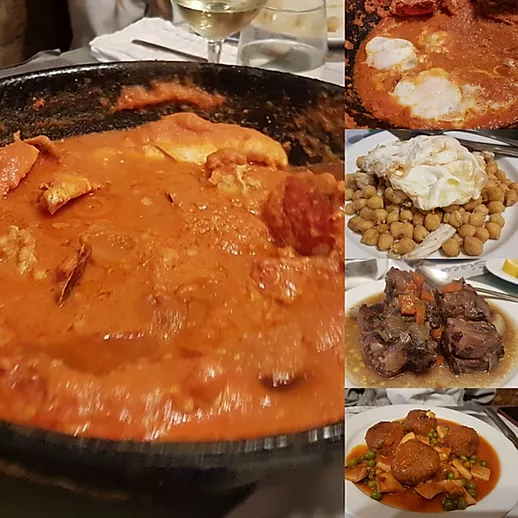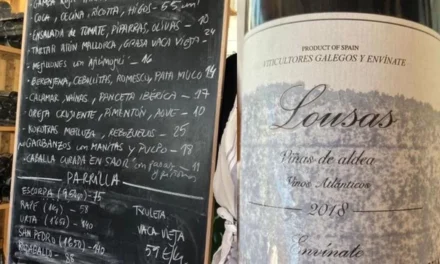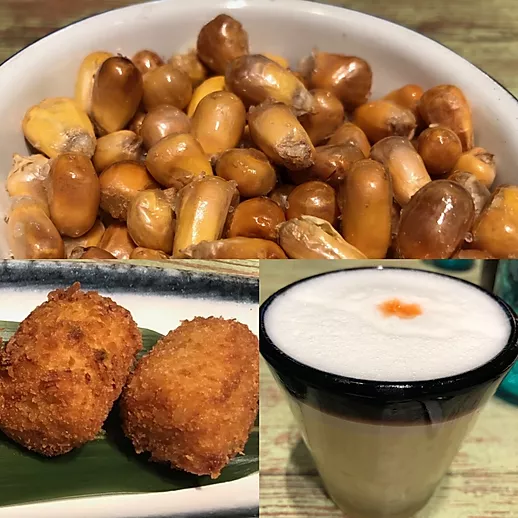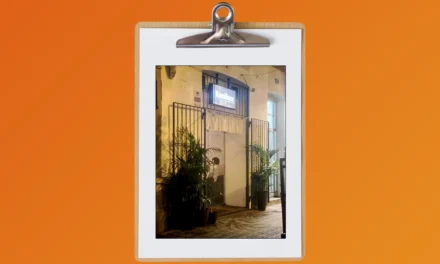1 Estrella Michelin y 2 Soles Repsol.
PARTE I
Lo primero, la dificultad de condensar en un escrito un cúmulo de sensaciones como hacía años que no sentía. Es muy difícil. Pero hoy intentaré concretar. Y ser muy tajante. Y directa.
Es el mejor restaurante-concepto-lugar en el que he estado en los últimos años. Probablemente en la última década…incluso el último decenio.
He salido tan conmovida y emocionada que he necesitado varias semanas para explicarlo. No soy la única. El resto de comensales que veis en stories que fuimos han pasado el mismo proceso que yo. Y compartimos el viaje, la sensación y el shock. Brutal.
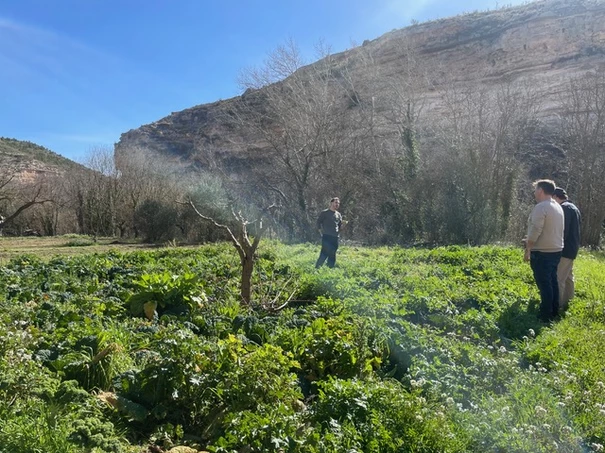
@oba.res es, probablemente, uno de los restaurantes más completos, sensibles y completos ahora mismo en el panorama gastronómico español. Y @javisanz_canitas y Juan Sahuquillo, sus artífices, dos de los cocineros más implicados, trabajadores y revolucionarios que he conocido en los últimos tiempos.
Hemos pasado 2 días en Albacete, en Casas-Ibáñez, un lugar único, especial y tremendamente familiar. Hemos conocido a la familia de Juan (lamentablemente no pudimos gozar de la compañía de Javi, de merecidísimo viaje de descanso), sus amigos, su trabajo, su casa, su vida, sus pasiones, miedos y luchas. Su forma de sellar un compromiso con su lugar y su cocina perenne en el tiempo y el corazón de su gente.
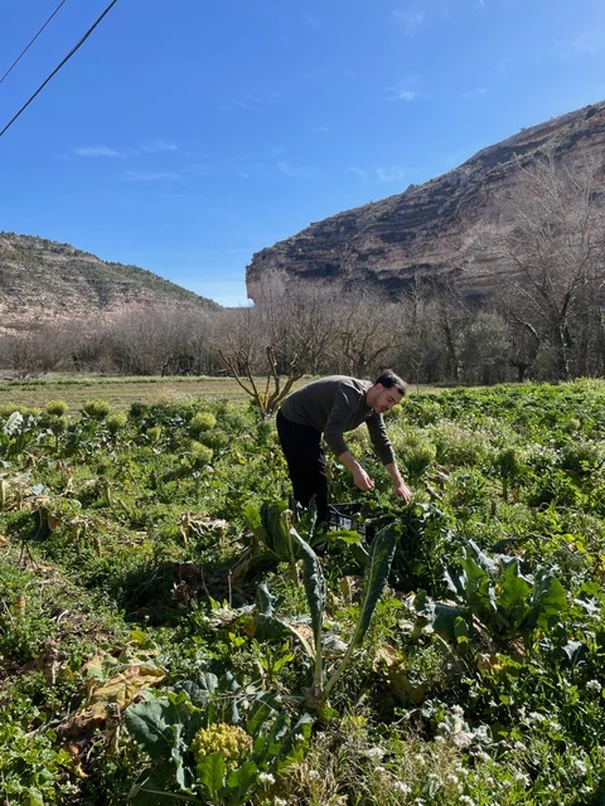
Las galas se honran con su presencia y muchos los conocen como “los Cañitas Maite” o los distinguen por su ecléctico y personal estilismo. Pocos se acercan a conocerlos. Viaje hasta Albacete y conducción a Casas-Ibáñez. Y en el conocimiento, la tierra, el trabajo y las horas reside la maestría y la excelencia. No hay más.
Trabajan codo a codo en el hotel de su familia. Con un equipo menor a 30 años. Impecables todos, al servicio del comensal y el huésped. Sonrisas y amabilidad por doquier. Un equipo digno de cualquier triestrellado. Acompasado, bien dirigido y fresco.
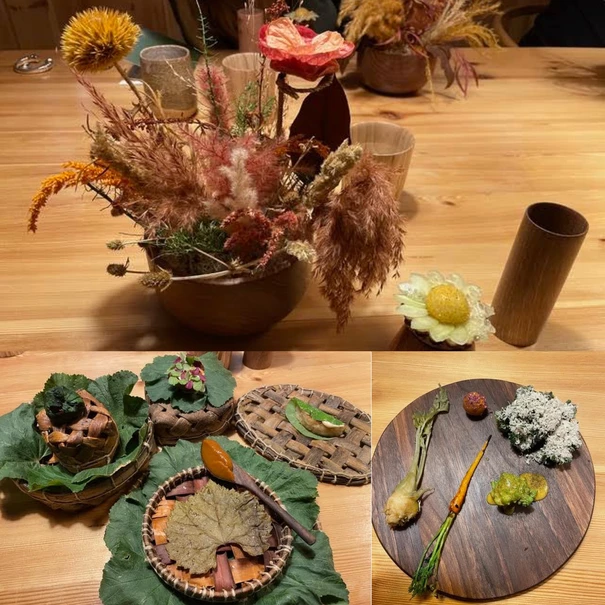
Se levantan temprano, acuden al huerto, recolectan, hablan con sus productores, se interesan por terrenos, productos y temporadas. Estudian en cocina. Trabajan e investigan. Crean. Se ponen manos al servicio de cada mediodía en Oba y @canitasmaite_res, que comparten espacio en diferentes pisos. Atienden a cocina y en sala. Charla con el comensal. Comentan servicios, prosiguen su trabajo y tras el servicio de noche se ponen al frente de la discoteca que regentan. Abren, organizan el servicio y sirven copas si es necesario. Juan duerme 4 horas el día que pasamos allí. Ha cerrado el bar y ha hecho caja. Descansa lo justo para desayunar con nosotros y enseñarnos el huerto y los alrededores. Recolecta algunas flores y hierbas. Cuida el regadío, observa la evolución de lo cosechado y celebra lo nuevo. Tiene tiempo para visitar a su padre, tomar una caña con amigos del pueblo y aún reserva horas para su novia, los viajes por trabajo y las galas gastronómicas dónde, generalmente, siempre se van con premio. Planean sus próximos viajes (en breve, a Japón) y diseñan nuevos conceptos y menús. Ahora, en centros comerciales. Tienen futuro. Mucho. Y ganas. Y valores, y mucho que enseñar con tan solo 26 años. Siguen la estela de su familia y sus precursores. Y abren camino a los nuevos…Ejemplo y humildad. Constancia e innovación. Juventud y conocimiento. Carlos, mi eterno compañero de viaje, de forma divertida les llama “viejóvenes”. Toda la frescura y explosión de los veintitantos y la sabiduría y arraigo de los mayores del lugar. Eso que sólo pasa en los pueblos y lugares dónde aún lo tradicional gana la batalla a lo digital…
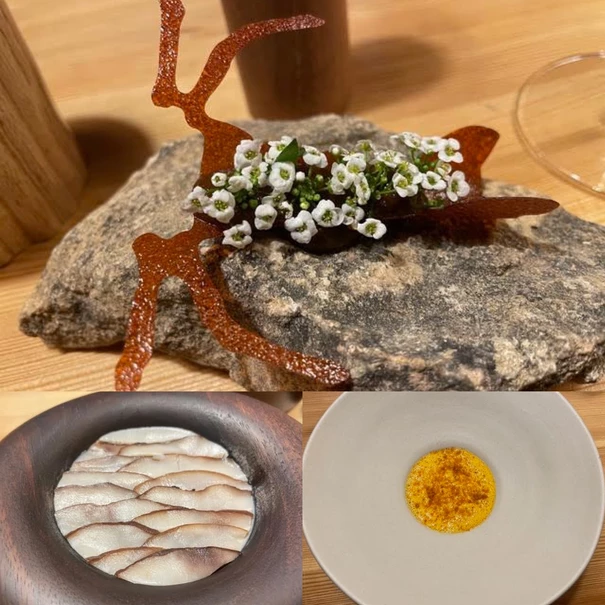
PARTE II
Arranca el menú en Oba. @oba.res es una oda a lo verde, la naturaleza, el huerto y sus frutos, la libertad, el campo y la raíz. Eso significa. Eso abarca.
En un ambiente marcadamente cálido, con unas pocas mesas en madera clara que a simple vista situarían al comensal en un lejano lugar más ubicado en los países nórdicos que en La Mancha, Juan y Javi dividen el menú en capítulos, en minihistorias. Con un librillo al que arrancan la hoja final, la explicación de todo, guían al comensal en un jardín tostado, ámbar y violeta, rosa palo y verde hierba. Las flores, los fermentados, la recolecta, los procesos, el ciclo, el manto, el olvido, el umami, lo olvidado y lo agradecido. Cada capítulo, un plato.
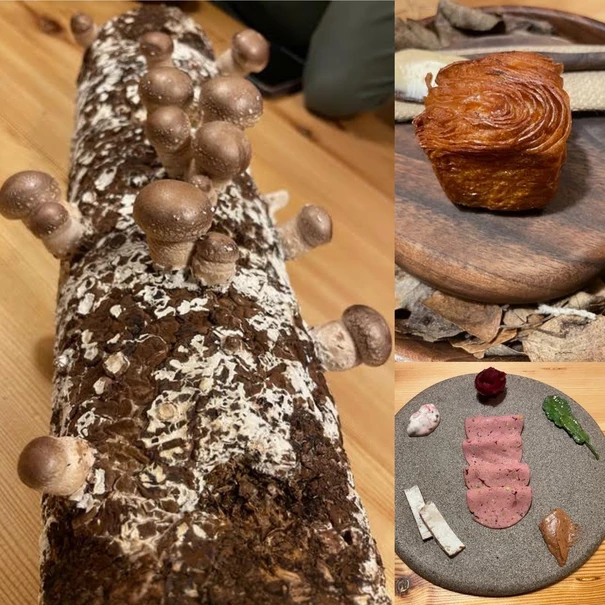
Más allá de la composición en mesa los platos aparecen revestidos de un aura casi holística donde el conjunto da sentido al germen. Arrancan las flores, pétalos y néctar, las hierbas, las verduras del huerto y el cangrejo. Toma posición la seta con miso de pan y vinagre y aparece el faisán con remolacha. Turno de la trucha y la anguila, probablemente los dos pases más arriesgados y complicados. Se humean al carbón y se sirven en sarmiento, garum, asados y tostados. Las setas con infusión, la oveja con patata y crema, la lengua de jabalí con setas silvestres y shoyu de huevo. Termina el ave de tiro con frutos secos y masa madre. El baile toma ritmo con los pases y color con la forma y composición de las vajillas. Otra cosa que queda en familia…Ellos se diseñan sus propios servicios y se los elaboran. Ramas, madera, paletas, cuencos, musgos, piedra, ratan….materiales y composición.
La parte dulce despliega otro abanico de colores y sentidos. Las moras silvestres, el queso oxidado, la pataca al rescoldo con trigo y melaza y la miel fermentada con pan de abeja y polen que, por poner algún pero, se me empasta demasiado dulce para el final. Pero que no amarga en absoluto un viaje maravilloso de producto y creación.
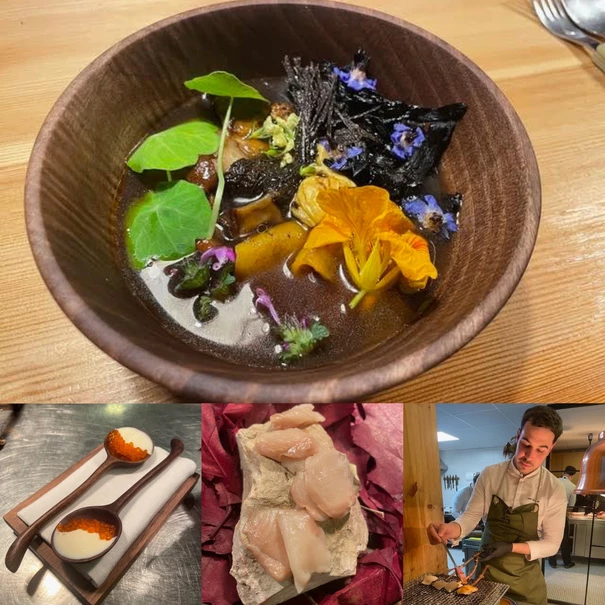
Tras la experiencia hay que reposarla. No sólo es vivirla. Es aprenderla, entenderla y aplicarla. Coherencia, creatividad y riesgo en una aventura que ellos comandan magistralmente y que todo envuelve para convertirla en única y personal.
Estimado lector y gourmet. No busques más. Si quieres vivirlo y no leerlo os ruego encarecidamente que busquéis el trayecto más corto para llegar a Casas-Ibáñez, en esa pequeña región de La Manchuela dónde no todo es vino y dónde los sueños ya no son gigantes, ni molinos, ni caballeros andantes. Ahora son motor vivo de una historia que no ha hecho más que empezar…
1 Michelin Star and 2 Repsol Suns.
PART I
First off, let me say how difficult it is to condense into words the abundance of feelings the likes of which I haven’t felt in years. It’s very difficult, but today I’ll do the best I can. I won’t beat around the bush or mince my words.
This is the best restaurant/concept/place I’ve been to in recent years — probably in the last decade.
I was so moved and thrilled by the experience that I needed several weeks to explain it. I’m not the only one. The rest of the diners in our group that you’ll see in my Stories went through the same process as I did: the journey, the sensation, and the shock. Incredible.
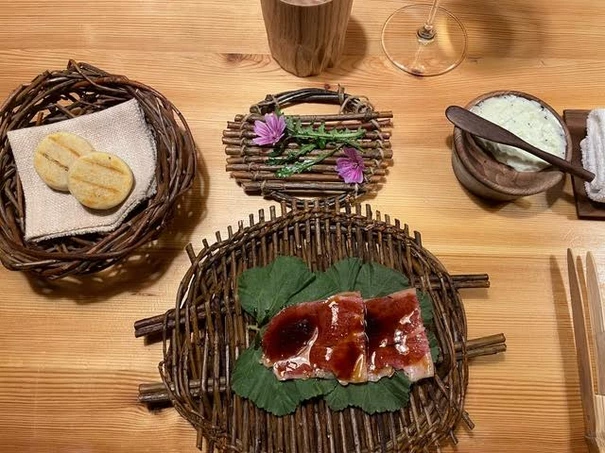
Oba (@oba.res) is probably one of the most profound and fully-formed restaurants on the Spanish culinary scene right now. Its creators Javi Sanz (@javisanz_canitas) and Juan Sahuquillo are two of the most engaged, hard-working, and revolutionary cooks I’ve met in recent times.
We spent two days in Albacete, at Casas-Ibañez, a unique, special, and tremendously warm place. We got to know Juan’s family (unfortunately, we missed out on enjoying Javi’s company, as he was away on a very well-deserved vacation), his friends, his work, his house, his life, and his passions, fears, and struggles. His way of sealing a commitment to his place and his cooking that stands eternal in time and in the heart of his people.
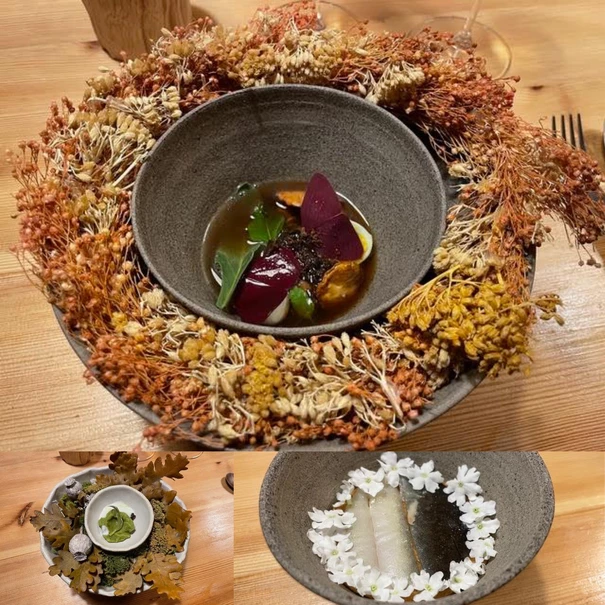
Javi and Juan honor award galas with their presence and many know them as “Los Cañitas Maite” or call out their eclectic personal styles. But few come to see it for themselves by traveling to Albacete and visiting Casas-Ibañez. Mastery and excellence reside in know-how, earth, effort, and time. There’s no two ways about it.
They work side-by-side in their family’s hotel with a team of under-30s. All of them are impeccable at serving diners and guests, with smiles and friendliness to go around. It’s a team worthy of any three-star establishment: in-step, well-run, and fresh-faced.
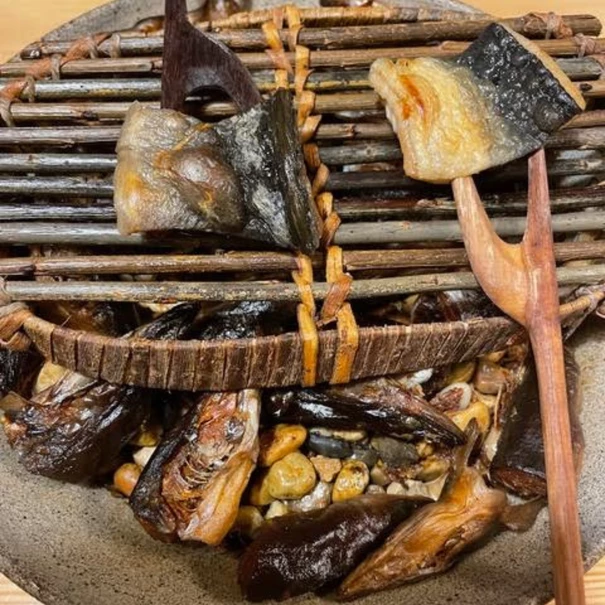
They wake up early, go to the farm, harvest their crops, and talk with their producers about land, products, and seasons. They study in the kitchen. They work and investigate. They create. They get down to task every day for the lunch service at Oba and Hotel & Gastro Cañitas Maite (@canitasmaite_res), which share space on different floors. They run the kitchen and the dining room. They chat with diners. They discuss the services and keep working; after dinner, they head over to the disco that they run. They open, organize the service, and even serve drinks if necessary. Juan slept four hours the day we spent there. He shut down the bar and closed out the register. He rested just long enough to meet us for breakfast and show us the farm and its surroundings. He picks some flowers and herbs. He takes a look at the watering system, notes the evolution of the harvest, and celebrates what’s new. He has time to visit his father, have a beer with local friends, and even set aside some hours for his girlfriend, work trips, and culinary galas where they typically always walk away with a prize. They’re planning their upcoming trips (Japan is next) and designing new concepts and menus. Now, in shopping centers.
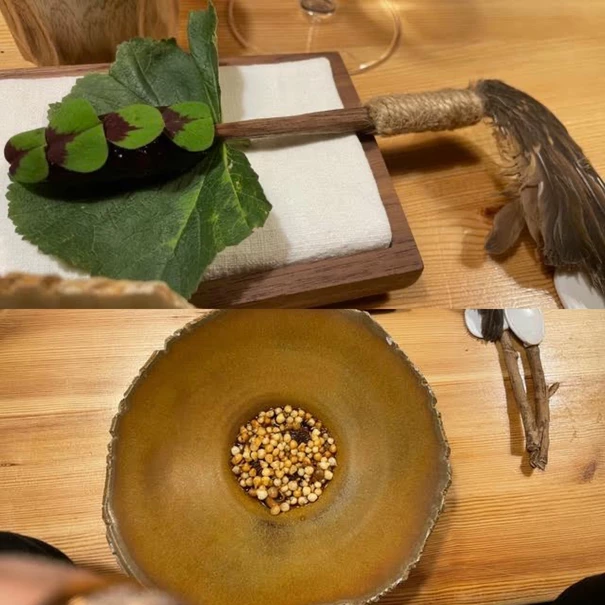
They have a future and it’s bright. They have the enthusiasm and the values and so much to show at just 26 years old. They’re following in the footsteps of their family and their precursors, and blazing the trail for newcomers. Leadership and humility. Consistency and innovation. Youth and knowledge. Carlos, my eternal travel companion, jokingly calls them “viejóvenes” — essentially wise beyond their years. All the breeziness and explosion of your twenties with the acumen and rootedness of village elders. That’s something that only happens in small towns and places where the traditional still wins out over the digital.
PART II
The tasting menu at Oba (@oba.res) begins. It’s an ode to green, nature, the farm and its fruits, freedom, the countryside, and rootedness. That’s what it means, what it encompasses.
It’s a strikingly warm setting, with a few blond wood tables that at first glance situate the diner in a far-away place more resembling the Nordic countries than La Mancha. Juan and Javi divide the menu into chapters which function as mini-stories. With a booklet from which they tear out the last page — the explanation of everything — they guide diners in a garden of dark brown, amber and violet, pale pink and herbaceous green. Flowers, fermentations, harvest, processes, cycle, mantle, oblivion, umami, the forgotten, and the appreciated. Each chapter, a dish.
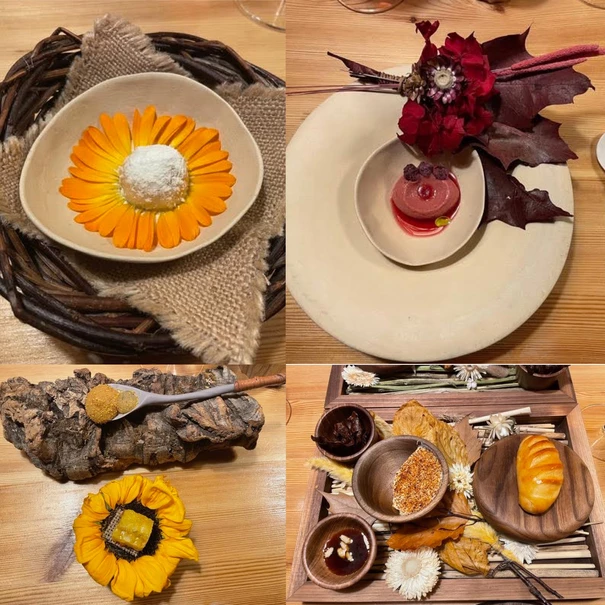
Beyond the composition on the table, the dishes appear to be bathed in a nearly holistic aura where the whole gives meaning to the seed. First comes the flowers, petals, and nectar, the herbs, the garden vegetables, and the crab. Next up is the mushroom with bread miso and vinegar, followed by the pheasant with beet. It’s time for the trout and the eel, probably the two most risky and complicated courses. They are smoked over coals and served in vine shoots, garum, roasted and toasted. The mushroom infusion, the mutton with potato and cream, the boar’s tongue with wild mushrooms and egg shoyu. Last is the game bird with nuts and sourdough. The dance picks up pace with the courses and gains color from the form and composition of the tableware. It’s something else kept in the family — they design and make it themselves. Branches, wood, palettes, bowls, mosses, stone, rattan…materials and composition.
The desserts unfurl another panoply of colors and feelings. The wild berries, the oxidized cheese, the Jerusalem artichoke in embers with wheatberry and molasses, and the fermented honey with bee bread and pollen which, to quibble, was much too sweet for me to end on. But that in no way embitters a wonderful journey of product and creation.
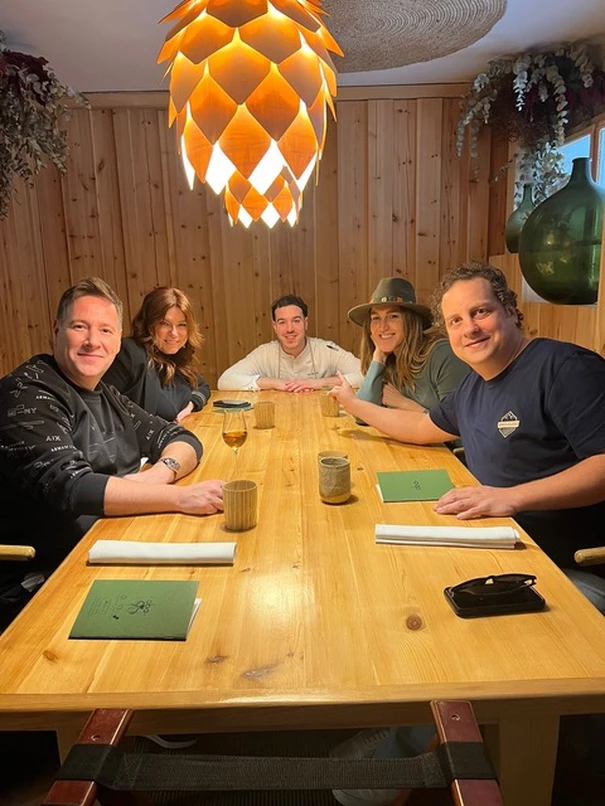
The experience needs time to sink in. You can’t just live it — you have to learn it, understand it, and apply it. Consistency, creativity, and risk in an adventure that they command masterfully and that everything envelops to become singular and personal.
Esteemed reader and gourmet: Look no further. If you want to not just read about it but experience it for yourself, I emphatically beg you to make haste to Casas-Ibañez, in that tiny region of La Manchuela where wine isn’t everything and where dreams aren’t giants, or windmills, or knights-errant. Now they are the living engine of a story that has only just begun.

